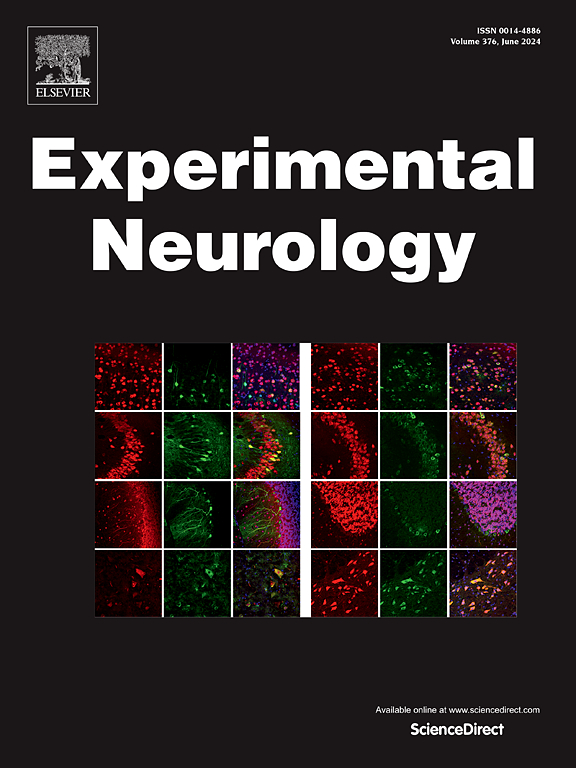Albumin antagonizes Alzheimer’s disease-related Tau pathology and enhances cognitive performance by inhibiting aberrant Tau aggregation
IF 4.6
2区 医学
Q1 NEUROSCIENCES
引用次数: 0
Abstract
Alzheimer's disease (AD) is a neurodegenerative disorder primarily characterized by cognitive impairment, for which effective treatments remain lacking. Albumin (ALB) is an essential carrier protein found in various body fluids, playing crucial roles in anti-inflammatory processes, antioxidation, and signal transduction. Recent research indicates that ALB may play a significant role in the development and progression of AD, though its specific function is not yet fully understood. In this study, we observed a link between serum ALB levels and cognitive performance in the elderly. Administration of ALB intranasally was shown to enhance learning and memory in MAPT/P301S transgenic mice, markedly decreasing hyperphosphorylation of Tau protein and reducing neuronal apoptosis. In a neuronal cell model overexpressing Tau, ALB administration in vitro attenuated Tau-induced toxicity and reduced the production of phosphorylated Tau. Additionally, co-incubation of Tau with ALB significantly reduced the formation of neurofibrillary tangles. These results suggest that ALB improves AD-related cognitive function by preventing the pathological aggregation of Tau and reducing its abnormal phosphorylation. Furthermore, ALB's neuroprotective effect helps prevent neuronal apoptosis in the cortex and hippocampus, providing potential targets for AD prevention and treatment.
白蛋白拮抗阿尔茨海默病相关的Tau病理,并通过抑制异常Tau聚集提高认知能力。
阿尔茨海默病(AD)是一种以认知障碍为主要特征的神经退行性疾病,目前仍缺乏有效的治疗方法。白蛋白(ALB)是一种存在于各种体液中的重要载体蛋白,在抗炎、抗氧化和信号转导过程中起着至关重要的作用。最近的研究表明ALB可能在AD的发生和发展中发挥重要作用,尽管其具体功能尚未完全了解。在这项研究中,我们观察到血清白蛋白水平与老年人认知能力之间的联系。经鼻给药ALB可增强MAPT/P301S转基因小鼠的学习和记忆能力,显著降低Tau蛋白的过度磷酸化,减少神经元凋亡。在过表达Tau的神经细胞模型中,体外给药ALB可减轻Tau诱导的毒性,并减少磷酸化Tau的产生。此外,Tau与ALB共孵育可显著减少神经原纤维缠结的形成。这些结果表明,ALB通过阻止Tau的病理聚集和减少其异常磷酸化来改善ad相关的认知功能。此外,ALB的神经保护作用有助于防止皮层和海马的神经元凋亡,为AD的预防和治疗提供了潜在的靶点。
本文章由计算机程序翻译,如有差异,请以英文原文为准。
求助全文
约1分钟内获得全文
求助全文
来源期刊

Experimental Neurology
医学-神经科学
CiteScore
10.10
自引率
3.80%
发文量
258
审稿时长
42 days
期刊介绍:
Experimental Neurology, a Journal of Neuroscience Research, publishes original research in neuroscience with a particular emphasis on novel findings in neural development, regeneration, plasticity and transplantation. The journal has focused on research concerning basic mechanisms underlying neurological disorders.
文献相关原料
公司名称
产品信息
索莱宝
Human serum ALB powder
索莱宝
DAPI
索莱宝
Heparin sodium
 求助内容:
求助内容: 应助结果提醒方式:
应助结果提醒方式:


